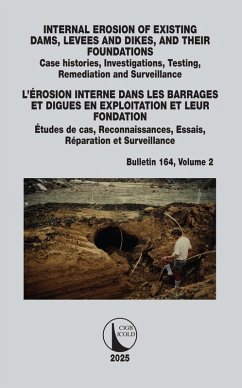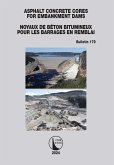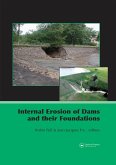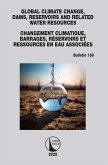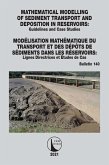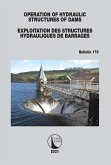The Working Group on Internal Erosion has brought together experts from all continents at annual meetings and their work provides the basis for most of Volume 2. Information on case histories has been most generously provided by owners and engineers, recognizing that such information will contribute to preventing tragic events in future. The work of specialists in laboratory testing and geophysics who have contributed actively to the Working Group over many years is now accessible to dam engineers in the chapters on investigations and monitoring in ICOLD Bulletin 164 Volume 2.
Le ICOLD Bulletin 164 Volume 2 présente des cas de ruptures et d'incidents par érosion interne et donne des conseils sur les reconnaissances, les prélèvements et les essais qui peuvent fournir les données nécessaires à l'analyse de la tenue des barrages et digues à l'érosion interne. Il donne également des conseils sur les mesures correctives, quand elles sont jugées nécessaires par l'évaluation du risque d'érosion interne, et sur les systèmes de surveillance et de contrôle permettant de vérifier et de confirmer la capacité permanente du barrage à résister à l'érosion interne à long terme. Le groupe de travail sur l'érosion interne a réuni des experts de tous les continents et leurs travaux constituent la base de la majeure partie du volume 2. Les maîtres d'ouvrage et les ingénieurs ont généreusement fourni des informations sur les études de cas, reconnaissant que ces informations contribueront à prévenir à l'avenir de tels événements tragiques. Le travail des géotechniciens et des géophysiciens, qui ont activement contribué au groupe de travail pendant de nombreuses années, est maintenant accessible aux ingénieurs des barrages dans les chapitres du ICOLD Bulletin 164 Volume 2 sur les reconnaissances et la surveillance.
Dieser Download kann aus rechtlichen Gründen nur mit Rechnungsadresse in A, B, BG, CY, CZ, D, DK, EW, E, FIN, F, GR, HR, H, IRL, I, LT, L, LR, M, NL, PL, P, R, S, SLO, SK ausgeliefert werden.

